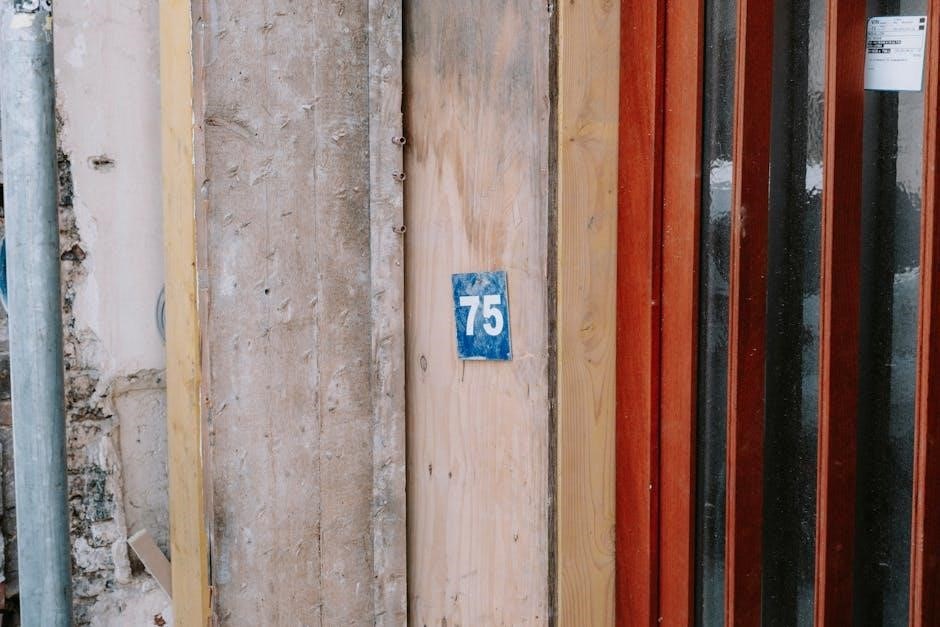
Blue Willow collecting is a captivating hobby that combines history, art, and storytelling. This iconic pattern, with its distinctive blue tones and timeless motifs, has charmed collectors for centuries.
From antique pieces to modern reproductions, Blue Willow offers a wide range of collectibles, making it accessible to both beginners and seasoned enthusiasts. The guide provides essential tips for identifying and valuing these pieces, helping collectors build meaningful collections.
Historical Background of the Blue Willow Pattern
The Blue Willow pattern traces its origins to 18th-century China, where it was inspired by traditional Chinese porcelain designs. The motif was later popularized in England during the late 1700s and early 1800s, with manufacturers like Spode and Minton creating their own interpretations. The design often depicts a romantic legend of star-crossed lovers, set against a backdrop of willow trees, pagodas, and water. Its enduring appeal lies in its timeless beauty and the story it tells. Over the years, the pattern has been adapted by numerous potteries worldwide, making it a beloved and recognizable design in ceramics. Collectors value its historical depth and artistic charm.
Why Blue Willow is Popular Among Collectors
Blue Willow’s timeless design and rich history captivate collectors, blending artistry with a romantic legend. Its versatility across eras and manufacturers offers a wide range of pieces, from rare antiques to modern reproductions. The pattern’s consistent yet evolving motifs allow collectors to pursue diverse interests, whether focusing on historical significance or aesthetic appeal. Additionally, the availability of pieces at various price points makes it accessible to both newcomers and seasoned enthusiasts. The emotional connection to the Blue Willow story further enhances its allure, making it a cherished and enduring collectible. This combination of beauty, history, and accessibility ensures its lasting popularity among collectors worldwide.
Understanding the Blue Willow Legend
The Blue Willow legend, a tragic tale of star-crossed lovers, adds emotional depth to the design, making it a cherished and romantic motif in collectible pieces worldwide.
The Story Behind the Blue Willow Design
The Blue Willow design is rooted in a poignant Chinese legend of doomed love between a mandarin’s daughter and a humble clerk, set against a backdrop of natural beauty.
The design captures their tragic tale, featuring iconic elements like the willow tree, the bridge, and the distant boat, symbolizing their eternal separation and enduring love.
These motifs, rendered in soft blue hues, have become instantly recognizable, resonating emotionally with collectors and art lovers alike, making the pattern timeless and universally cherished in ceramic art.
Cultural Significance of the Blue Willow Legend
The Blue Willow legend, a tale of star-crossed lovers, resonates deeply across cultures, symbolizing enduring love and longing. Its universal appeal has made it a cherished motif in art and design.
Originating from Chinese folklore, the story blends seamlessly with Western interpretations, creating a unique cultural bridge. This fusion is reflected in the design’s timeless popularity, making it a staple in ceramic art history.
For collectors, the legend adds emotional depth to each piece, transforming them into more than just objects—they become storytellers, connecting past and present, and enriching the collector’s journey with history and meaning.

Key Characteristics of Blue Willow Patterns
Blue Willow patterns are distinguished by their iconic blue palette and narrative scenes, often depicting a willow tree, Pagoda, and a pair of lovers in a serene landscape.
These designs are rich in symbolism, with elements like the willow tree representing flexibility and the Pagoda signifying stability, creating a harmonious balance in each piece.
Common Motifs and Symbols in Blue Willow Design
Blue Willow designs are renowned for their iconic motifs, which tell a romantic story of love, loss, and longing. Central to the pattern is the willow tree, symbolizing flexibility and resilience, often depicted near water.
Other key elements include the Pagoda, representing stability and strength, and the pair of lovers, embodying enduring romance. Bridges, boats, and distant mountains add depth to the landscape, while birds and flowers enhance the natural beauty of the scene.
These motifs, steeped in tradition, create a visually appealing and emotionally resonant design that has captivated collectors for generations, making Blue Willow pieces highly sought after for their artistic and historical significance.
Distinguishing Features of Early vs. Modern Blue Willow
Early Blue Willow pieces, particularly those from the 18th and 19th centuries, often feature more intricate and hand-painted details, with vibrant cobalt blue hues on a crisp white background. These pieces typically showcase finer craftsmanship, with subtle variations in design that reflect their artisanal origins.
Modern Blue Willow, produced from the mid-20th century onward, tends to have less intense coloring and more standardized patterns. The designs may appear less intricate due to mass production techniques. Additionally, modern pieces often include backstamps or markings that identify the manufacturer, which can aid in differentiation.
Collectors should look for these distinguishing features to accurately identify and date Blue Willow items, as they significantly impact the piece’s value and historical significance.

How to Identify Blue Willow Pieces
Identifying Blue Willow involves examining the pattern, colors, and markings. Look for the iconic willow tree, bridge, and boat motifs. Check for maker’s marks or signatures on the underside, as these can help date and authenticate the piece. The condition and clarity of the design also provide clues about its age and origin. Consulting a detailed guide or expert can further aid in accurate identification and valuation.
Pattern Recognition and Variations
Recognizing Blue Willow patterns involves identifying key motifs like the willow tree, bridge, and boat. Variations may include additional elements such as birds or flowers. Early pieces often feature crisp, hand-painted designs, while later reproductions may have less detail. Colors can range from deep cobalt blues to softer shades, affecting value. Some patterns include borderwork or scenic extensions, distinguishing them from standard designs. Collectors should study reference guides to spot subtle differences, as variations can significantly impact a piece’s rarity and worth. Consulting experts or comparing pieces side by side can enhance accuracy in identification and valuation.
Identifying Marks and Signatures
Identifying marks and signatures is crucial for authenticating Blue Willow pieces. Look for stamps, logos, or handwritten signatures on the base or back of items. Early English pieces often bear marks like “Royal Worcester” or “Spode,” while later reproductions may have “Made in England” or “Blue Willow.” Asian reproductions might feature chop marks or different script styles. Some modern pieces include artist signatures or edition numbers. Collectors should consult detailed guides to recognize these markings, as they significantly impact value. The presence of certain marks can indicate rarity or age, making them essential for accurate identification and valuation. Always examine pieces thoroughly, as faint or worn marks can be easy to overlook.
Rare and Unique Blue Willow Pieces to Look For
Rare and unique Blue Willow pieces are highly sought after by collectors. These include early 18th-century English plates, rare Spode examples, and limited-edition modern designs. Look for pieces with intricate details or unique motifs, such as the “Bridge of Forgetfulness” or “Weeping Willow” variations. Artist-signed or numbered pieces are particularly valuable. Historical provenance, like pieces from notable estates, can also command high prices. Some rare items, such as complete dinner sets or large serving platters, are harder to find. Collectors should consult detailed guides to identify these rare finds, as they often hold significant value and are true treasures in the world of Blue Willow collecting.
Valuing Blue Willow Collectibles
Valuing Blue Willow collectibles involves assessing age, condition, rarity, and origin. Older English pieces typically hold higher value, while newer or reproductions may be more affordable.
Factors Influencing the Value of Blue Willow Items
The value of Blue Willow items is shaped by several key factors. Age plays a significant role, with older, English-made pieces typically commanding higher prices due to their rarity and historical significance. Condition is another critical factor; items in pristine condition, without chips or cracks, are more valuable. Rarity also impacts value, as limited-production runs or unique designs can elevate a piece’s desirability. Additionally, the presence of authentic marks and signatures can increase worth, ensuring authenticity. Market demand fluctuates, influencing prices, with certain periods seeing heightened interest in Blue Willow collectibles. Understanding these factors helps collectors make informed decisions when purchasing or selling.
Current Market Trends and Price Ranges
Current market trends for Blue Willow collectibles show a steady demand, with prices varying widely based on age, condition, and rarity. Antique English pieces, such as early 19th-century plates or pitchers, often fetch higher prices, ranging from $500 to $2,000. American-made items from the mid-20th century are more affordable, typically priced between $50 and $300. Rare and unique pieces, like intricately designed platters or figurines, can sell for upwards of $1,000 to $5,000. Online marketplaces and auctions have made it easier to buy and sell, creating a dynamic and competitive environment. Collectors are advised to stay informed about market fluctuations to make strategic purchases and maximize the value of their collections.

Collecting Blue Willow: Tips and Strategies
Blue Willow collectibles vary in price, with older English pieces commanding higher values, from $500 to $2,000. American-made items range from $50 to $300, while rare finds can exceed $1,000.
Where to Find Blue Willow Pieces
Blue Willow pieces can be found through various channels, including online marketplaces like eBay and Etsy, antique shops, flea markets, and estate sales. Specialized antique dealers often carry a selection of Blue Willow items, ranging from common to rare pieces. Auction houses like Christie’s and Sotheby’s occasionally feature Blue Willow in their listings. Additionally, collector communities and forums are excellent resources for connecting with other enthusiasts and discovering unique finds. Some pieces may also be available through heritage auctions or private sales. When searching online, platforms like Ruby Lane or WorthPoint are recommended for authenticated and appraised items.
How to Care for and Preserve Blue Willow Items
To maintain the beauty and value of Blue Willow pieces, proper care is essential. Avoid exposing them to harsh chemicals or abrasive cleaners, as these can damage the glaze. Use mild soap and warm water for cleaning, and dry thoroughly to prevent water spots. Avoid stacking fragile items to reduce the risk of chipping or cracking. Store pieces in a cool, dry place away from direct sunlight, which can fade the blue pigment over time. For display, use padded shelves or soft linings to protect the items. Regular dusting with a soft cloth is recommended to maintain their appearance. Avoid using them for food or drink, as acid from foods can etch the surface. Professional restoration should be sought if damage occurs.
Resources for Blue Willow Collectors
Essential guides like Blue Willow, An Identification and Value Guide by JanetActonTreasures and Mary Gaston’s 2nd Edition provide detailed insights. Over 650 color photographs aid identification.
Recommended Books and Guides

For collectors seeking in-depth knowledge, Blue Willow, An Identification and Value Guide by JanetActonTreasures is a must-have. This comprehensive guide features over 650 color photographs of various Blue Willow pieces, including bowls, plates, pitchers, and rare items.
Another invaluable resource is Mary Gaston’s Blue Willow China Identification & Value Guide, 2nd Edition. This book provides detailed descriptions, historical context, and valuation tips, making it essential for both beginners and experienced collectors.
These guides not only aid in identifying authentic Blue Willow pieces but also offer insights into their cultural significance and market value, helping collectors make informed decisions.
Online Communities and Forums
Online communities and forums dedicated to Blue Willow collecting offer invaluable resources for enthusiasts. Platforms like Facebook groups and specialized collector forums provide spaces for sharing discoveries, seeking identification help, and discussing the value of pieces.
These communities often feature expert insights, educational discussions, and networking opportunities. Many include sections for buying and selling items, making them essential for both new and experienced collectors. Additionally, they may host events, webinars, or live Q&A sessions with experts in the field.
Collecting Blue Willow is a rewarding journey, blending history, art, and personal discovery. With the right guide, enthusiasts can confidently identify, value, and cherish these timeless pieces, building lasting collections.
Final Thoughts on Building a Blue Willow Collection
Building a Blue Willow collection is a journey that combines passion, research, and patience. Whether you’re a seasoned collector or just starting out, each piece tells a story and holds historical significance.
With the help of identification and value guides, enthusiasts can navigate the market confidently. These resources provide insights into patterns, markings, and the cultural context behind each item, ensuring informed decisions.
Preserving and caring for your collection is equally important. Proper storage, cleaning, and display methods will safeguard your pieces for future generations to appreciate and enjoy.
Engaging with online communities and forums can further enrich your collecting experience, offering tips, market trends, and a network of like-minded individuals who share your passion for Blue Willow.